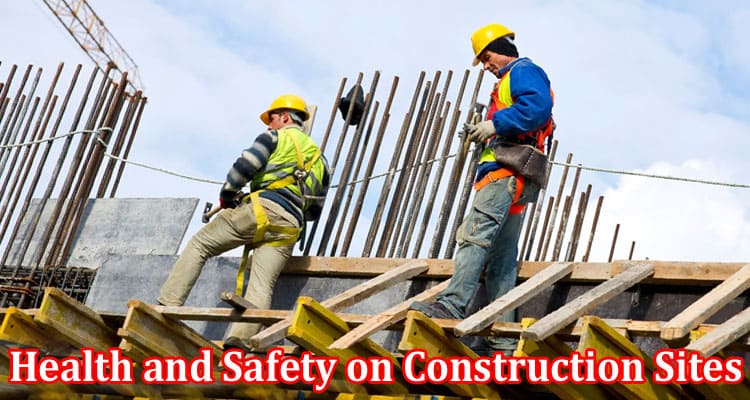Safety is paramount in this dynamic arena, where urban landscapes transform before our eyes and towering structures pierce the skyline. Our focus is not just on bricks and mortar but on the lives of the individuals who bring these visions to life.
Construction is more than just a physical endeavour; it’s a complex orchestration of ingenuity, teamwork, and relentless determination. However, amidst the symphony of power tools and the ballet of cranes lies an ever-present responsibility—safeguarding lives. This responsibility rests on the shoulders of both employers and employees, each with unique yet interdependent roles that collectively weave the fabric of safety.
As the stewards of construction sites, employers bear the weight of creating an environment where hazards are identified, risks are mitigated, and safety is not just a slogan but a way of life. They are responsible for developing comprehensive safety protocols, educating their workforce, and overseeing daily operations. On the other hand, employees hold the key to executing these protocols with precision. Their awareness, compliance, and proactive involvement are the bedrock upon which a culture of safety is built.
In this blog, we will embark on a journey through the intricacies of construction site health and safety. We will navigate the responsibilities that employers and employees shoulder, uncovering the mechanisms that ensure well-being in an industry where challenges and triumphs are entwined. Let’s uncover the blueprint for a safer tomorrow as we explore the dynamic interplay between those who steer the ship and those who keep it afloat, all in the name of occupational health and safety.
Employer Responsibilities
1. Creating a Safe Work Environment
A comprehensive understanding of potential dangers and risks is crucial for ensuring a secure construction site. Employers are responsible for conducting thorough risk assessments and identifying potential hazards before they turn into disasters. Employers can create a protective barrier for their employees by implementing strong safety protocols and procedures. Safety standards must be followed in every aspect of construction, from electrical wiring to scaffolding installations.
Providing adequate safety equipment and tools is equally important. Hard hats, gloves, and safety goggles are not just accessories but also essential protective gear for workers. Employers must ensure that the tools used on the job do not compromise safety. Properly maintained, high-quality equipment can be the difference between a job well done and a life-changing accident.
2. Training and Education
Ensuring construction site safety requires a strong foundation of knowledge. Employers have the responsibility of providing thorough safety orientations for newcomers and ongoing training to maintain a culture of safety. Regular workshops on safety procedures equip employees with the skills and knowledge to confidently handle hazards.
To enhance the construction workforce’s abilities, specialised training is necessary. Operating heavy machinery and working in confined spaces require unique skills that must be taught. Employers must provide customised training to empower workers and ensure they remain competent and self-assured when faced with challenges.
3. Health and Safety Policies
Construction projects must prioritise safety by implementing well-defined codes that are communicated clearly to all employees. Employers are responsible for crafting meticulous health and safety policies that leave no room for ambiguity. These policies should be an integral part of the project’s DNA and regularly updated to reflect a commitment to continuous improvement. As safety standards evolve, employers must remain vigilant and adjust their policies accordingly by staying attuned to the latest industry guidelines. Sometimes, constructing the right health and safety policies for your workplace is a challenging task. In such cases, opting to learn from educational programmes like IOSH managing safely can be an efficient way for you as an employer to address the problems in your workplace, allowing you to tackle them.
4. Supervision and Monitoring
Competent supervisors play a crucial role on construction sites by maintaining safety protocols and minimising risks. Regular site inspections and audits can identify and address potential issues before they become major problems. Being vigilant is key to preventing incidents, and employers should take the lead in investigating accidents and near-misses to determine their root causes and implement preventative measures. Learning from mistakes is essential for progress.
5. Incident Reporting and Management
To avoid future accidents, it is important to learn from past incidents. Employers should have a well-defined process for reporting any mishap, regardless of its severity. This record serves as a guide to help employers enhance safety.
In-depth investigations help uncover the root cause of an incident and provide valuable insights for future actions. Employers must be proactive in analysing accidents to learn from them. More than simply reacting to incidents is required; real progress comes from being proactive.
6. Collaboration with Regulatory Bodies
Safety is not limited to just construction sites. Employers should form alliances with regulatory organisations and comply with safety regulations at the local and national levels. These organisations provide valuable guidance and resources that enhance the construction industry’s overall safety knowledge.
Participating in safety initiatives goes beyond legal requirements. Employers can help establish safety standards and promote a culture of innovation and concern for safety in their projects. When working together, they set higher safety standards for everyone.
Employee Responsibilities
1. Understanding and following safety protocols
The responsibility of safety cannot be solely placed on one party; it requires the cooperation of employees who serve as the foundation for its success. It is imperative that every person comprehend and adopt safety procedures as essential practises. Personal protective equipment (PPE) is not an optional accessory but a vital protection tool. PPE, such as hard hats that shield against falling objects and safety harnesses that prevent dangerous falls, serves as the first line of defence.
2. Participating in training
The idea of safety is not fixed and unchanging but rather adapts alongside the industry. Workers need to take an active role in training sessions, absorbing the most current guidelines and methods. Attending safety orientations is not a mere formality but a commitment to one’s health and safety. Achieving certifications and credentials is more than just obtaining a piece of paper; it represents both skill and commitment. By undergoing safety courses like IOSH Working Safely, workers can adaptively develop skills that help them ensure their safety while carrying out tasks, overall displaying their competency.
3. Reporting hazards and incidents
In the construction industry, employees need to remain alert and report any potential hazards to their supervisors. The bystander effect should not be tolerated, as every person must take responsibility for safety. Incidents that occur or almost occur serve as warnings, and sharing these experiences can help prevent similar accidents in the future. Vigilance is crucial to maintaining a safe work environment.
4. Promoting a Safety Culture
Ensuring safety is not an individual task; it requires a joint effort. Employees are responsible for encouraging a safety-focused culture and motivating their colleagues to prioritise their health. Setting an example is crucial, showing that following safety procedures is not an inconvenience but a duty that protects lives.
5. Proper Use of Tools and Equipment
Tools in the symphony of construction are like musical instruments, and mastery is crucial. Every employee undergoes equipment operation and maintenance training to ensure deliberate and calculated actions. Malfunctioning machinery is not a challenge to overcome but a hazard to be reported and fixed.
Conclusion
The progress and creativity at a construction site are undeniable, but safety should always be the top priority. Employers and employees must work together to establish a culture of occupational health and safety, using their respective tools to ensure well-being.
Responsibility for safety begins at the start of a project and continues until its completion. Employers establish safety policies and guide the project towards success. Employees, who physically build the project, must adhere to these policies through diligence and awareness, as well as a commitment to their own safety and that of their colleagues.
Together, they create a legacy based not only on physical construction but also on trust, respect, and the belief that everyone has the right to return home safely. Safety is not just a destination but an ongoing journey towards progress, achieved through the cooperation of employers and employees.




